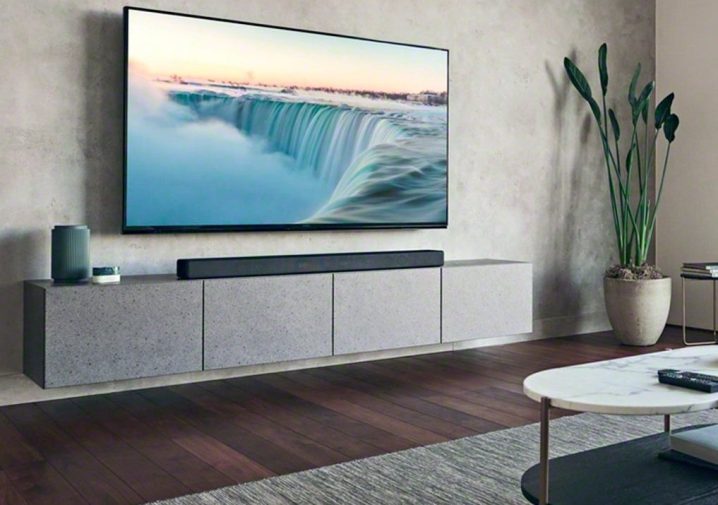
Used to transmit audio signals between devices, optical audio cables (also known as TOSLINK cables) are an important addition to your home cinema setup when connecting older sound systems or linking devices like one of the best soundbars to your TV. The best optical audio cables can vary significantly in price making it tricky to know what to buy.
In all cases, such cables use fiber optic technology to transmit digital audio signals which makes them different from many other audio cables. Once you’ve checked your device is compatible with such cables (look for an optical audio port), and determined that you don’t wish to use HDMI instead to hook up your devices, take a look below at what we’ve picked out as the best optical audio cables available today. We’ve also looked at how we picked our choices to help you come to the best decision for your situation.
The best optical audio cables in 2024
- Buy the for the best all-round experience.
- Buy the for a budget solution.
- Buy the for a premium solution.
- Buy the for a reliable cable.
- Buy the for better organization.
- Buy the for unconventional angles.
Monoprice Premium S/PDIF Digital Optical Audio Cable
Best all-rounder
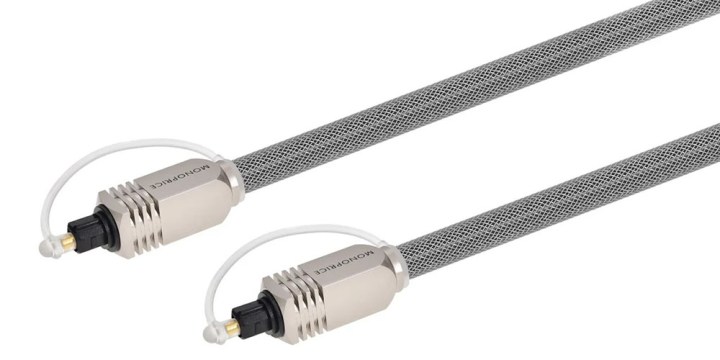
| Pros | Cons |
| Well priced | Doesn’t fit Xbox 360 Slim model and some other recessed ports |
| Good length | |
Offering all the essentials you could need, the Monoprice Premium S/PDIF Digital Optical Audio Cable is well-priced and highly effective. It has full-sized male Digital Optical Audio connectors at each end with gold-plated ferrule helping to cut back on corrosion. Precision polished fiber tips ensure maximum signal transfer while there are mesh metal jackets that protect the cable from any potential damage.
An 8mm outside diameter ensures chunkiness but also means that certain devices with recessed ports mean the Monoprice Premium S/PDIF Digital Optical Audio Cable won’t fit. That includes the slimmer Xbox 360 model which could affect some users. Check out the port you need to use to consider if this could become a problem for you.
| Specifications | |
|---|---|
| Length | 6ft |
| Outside diameter | 8mm |
Monoprice S/PDIF Digital Optical Audio Cable
Best budget cable
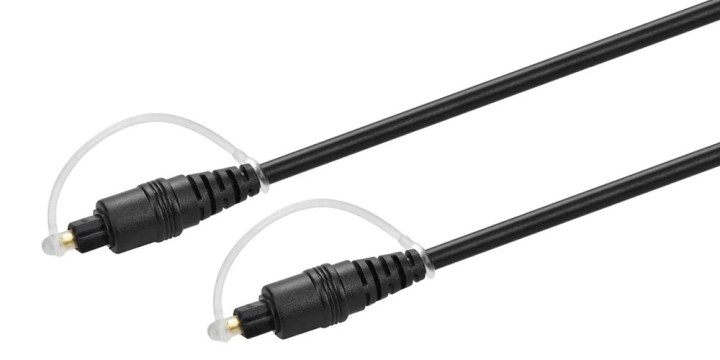
| Pros | Cons |
| Small outside diameter | Only basic plastic tip protectors |
| Very cheap | |
For the cheapest solution, the Monoprice S/PDIF Digital Optical Audio Cable is still pretty good. 6 feet will suit most people’s needs with the cable offering full-size TOSLINK connectors on either side. They’re designed with molded heads and strain-relief boots with gold-plated ferrule like pricier cables.
There are precision polished fiber tips too but plastic tip protectors on each end are where corners are being cut to keep prices down. It’s no great hardship though. For most people though, this won’t be an issue and the Monoprice S/PDIF Digital Optical Audio Cable works very well for the price, garnering some excellent reviews.
| Specifications | |
|---|---|
| Length | 6ft |
| Outside diameter | 5mm |
Monster M-Series 1000 Fiber Optical Audio Cable
Best premium audio cable
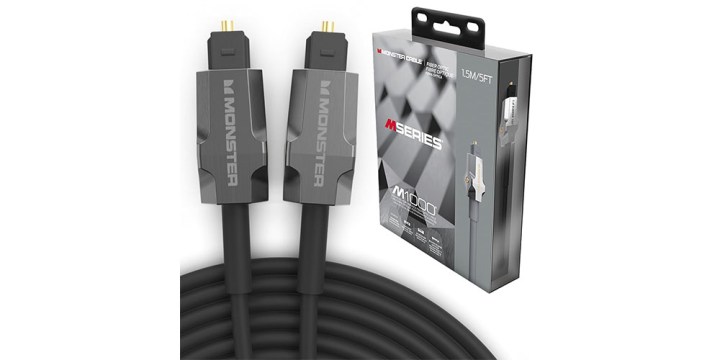
| Pros | Cons |
| Robust design | Expensive |
| Well-respected brand | |
Monster has established a name for itself in recent years for developing premium cables that are built to last. Pricier than the competition, if you’re keen to focus on durability, you’ll appreciate the Monster M-Series 1000 Fiber Optical Audio Cable. Its diameter is wider than most because it’s made with a Duraflex protective jacket and metal housing surrounding the cable.
Despite that, it’s still very easy to route and install with corrosion-resistant gold-plated connectors which help keep things working very well. Engineered to be twisted and manipulated more than average, the Monster M-Series 1000 Fiber Optical Audio Cable is a good long-term solution if you’re keen to make an investment.
| Specifications | |
|---|---|
| Length | 5ft |
| Outside diameter | 13mm |
Amazon Basics Toslink Digital Optical Audio Cable
Best reliable cable
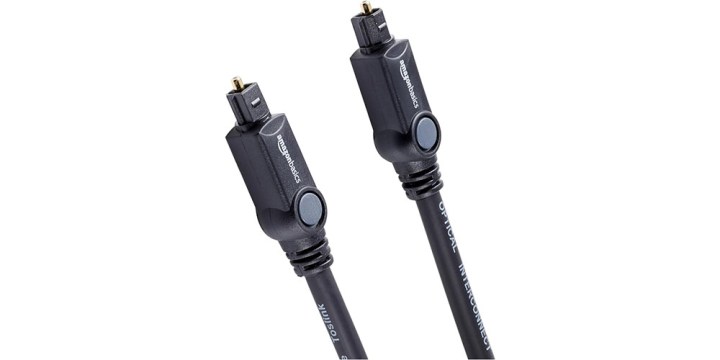
| Pros | Cons |
| Well regarded | Some issues with fit |
| Lightweight | |
Suitably versatile, the Amazon Basics Toslink Digital Optical Audio Cable is an immediate good bet as Amazon Basics products tend to be pretty reliable. This particular one is fairly lightweight and flexible while still being durable, so it’s perfect for all your AV equipment connecting needs.
It offers corrosion-resistant gold-plated connectors along with buffer tubing to ensure a reliable fit. While some reviewers found that its diameter meant it didn’t fit every port, the Amazon Basics Toslink Digital Optical Audio Cable is otherwise highly reliable.
| Specifications | |
|---|---|
| Length | 6ft |
| Outside diameter | 12mm |
BlueRigger Optical Audio Toslink Cable
Best audio cable for organization
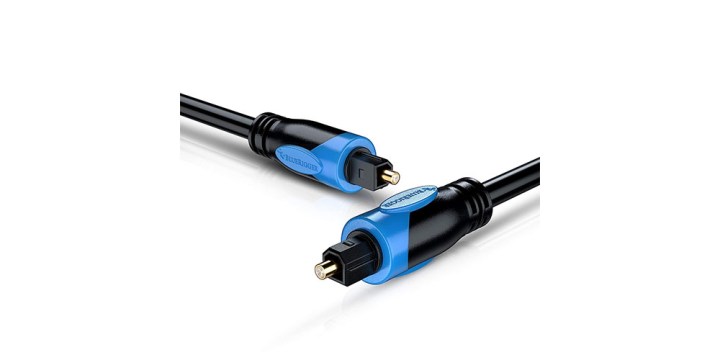
| Pros | Cons |
| Ideal for identifying your cables | Too long for some setups |
| Long length | |
It’s convenient to be able to glance at the cables in the back of your TV and immediately identify which one is which. With the BlueRigger Optical Audio Toslink Cable, the blue ends mean you can quickly see where the optical cable is. Alongside that, it’s a huge length at 15 feet while it has 24K gold-plated connectors.
Besides those key essentials, the BlueRigger Optical Audio Toslink Cable offers a lightweight and flexible high-quality PVC jacket for long-lasting usage, while there are removable rubber tips for further protection when not in use. A snug fit means you won’t have to worry about the BlueRigger Optical Audio Toslink Cable coming loose either.
| Specifications | |
|---|---|
| Length | 15ft |
| Outside diameter | Unknown |
EMK 90-Degree Toslink Optical Cable
Best audio cable for awkward angles
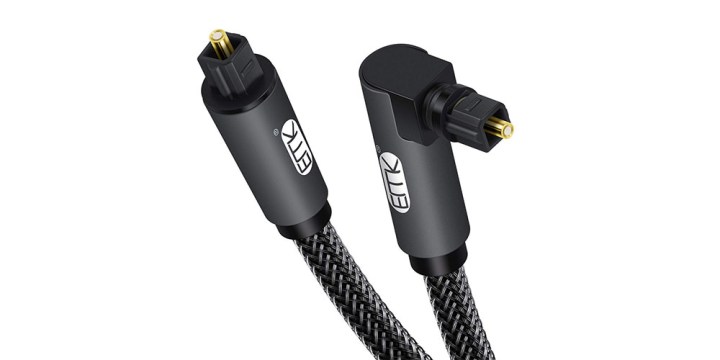
| Pros | Cons |
| Ideal for awkward angle placement | Little short |
| Braided cable | |
Sometimes, you don’t want a standard cable with 90-degree angled cables being the most useful angle for most people. That can be when wall-mounting a TV or simply when you have limited space. That’s where the EMK 90-Degree Toslink Optical Cable is very useful. It’s robust thanks to its braided nylon mesh jacket and heavy-duty construction so it can handle being awkwardly placed, while the connector itself is angled for added ease.
It connects easily to any relevant devices even though it’s a little shorter than average at 5 feet long. Occasional reports have suggested its sound quality isn’t as high-end as some competitors but it won’t be noticeable for most people.
| Specifications | |
|---|---|
| Length | 5ft |
| Outside diameter | 10mm |
How we chose these optical audio cables
Finding the right optical cable for you can feel overwhelming because there are literally thousands of options around. Where do you even begin? That’s why we’ve narrowed things down to some highlights but it’s important to know what factors we considered before recommending anything. Here’s what you need to know.
Think about the fit you need
While it might seem like everyone needs a highly durable cable, that’s not actually always the case. If you simply plan on placing a cable behind the TV and leaving it, you’re good to go with any solution. However, if you want to feed the cable into a wall or similar, you really don’t want to have to replace it often. That’s why it’s important to invest in something highly durable at a time like this. Similarly, think about if an angled cable would suit your needs more than a traditional length of cable.
Pricier isn’t always better
Like HDMI cables, you can spend a huge sum of money on one cable. In reality, the difference isn’t as huge as you might think. While you might appreciate the peace of mind of spending a lot, the vast majority of people will be perfectly happy with something that’s a more affordable price, and they won’t notice a difference.
How long do you need it to be?
Most audio cables are about 6 feet long with some only 5 feet long. Only you know how much length you actually need. Depending on your setup, you might actually want it to be shorter because it’ll make cable management much simpler. Alternatively, you might need something much longer such as a 15-foot cable. Measure the space involved and aim to go slightly longer than you need to ensure you have plenty of flexibility.
This article is managed and created separately from the Digital Trends Editorial team.
Editors' Recommendations
- Best Samsung TV deals: Save on 4K TVs, QLED TVs, OLED TVs, 8K TVs
- Best Vizio TV deals: Cheap smart TVs starting at $90
- Best soundbar deals: Save on Bose, Samsung, Vizio, and more
- Best 85-inch TV deals: Save on Samsung, Sony, TCL, and more
- Best OLED TV deals: Save on LG C3, Samsung S90C, and more




